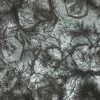I've had a couple blacklights in my backyard for around a month now. I had caught nothing except the odd sterile Tetramorium queen until Solenopsis molesta had their nuptial flights and I caught 43 queens, most of which seem to be fertile. I was wondering if anyone knew what ant species are attracted to black lights?
- Formiculture.com
- Forums
- Gallery
- Members
- Member Map
- Chat
















